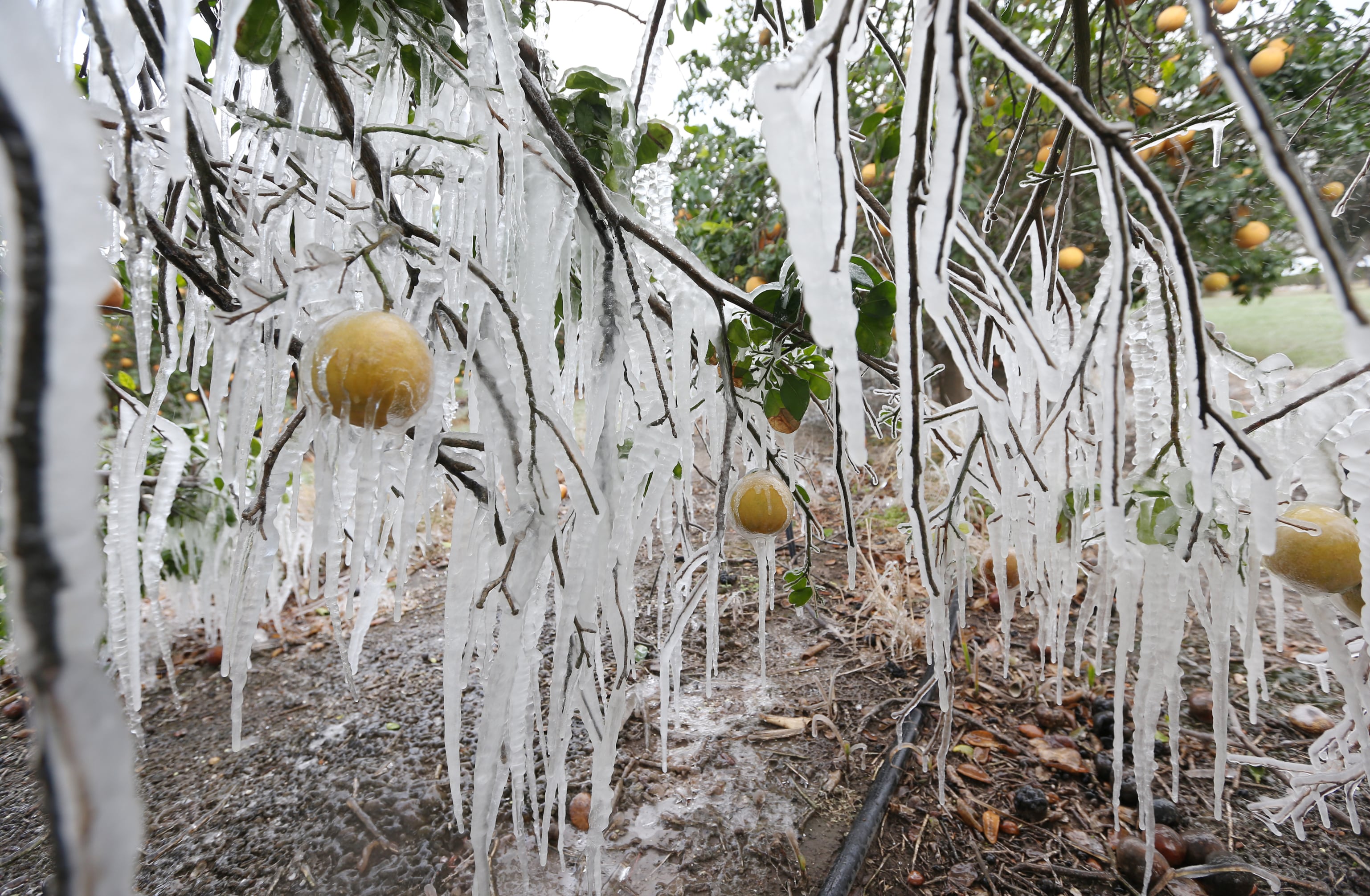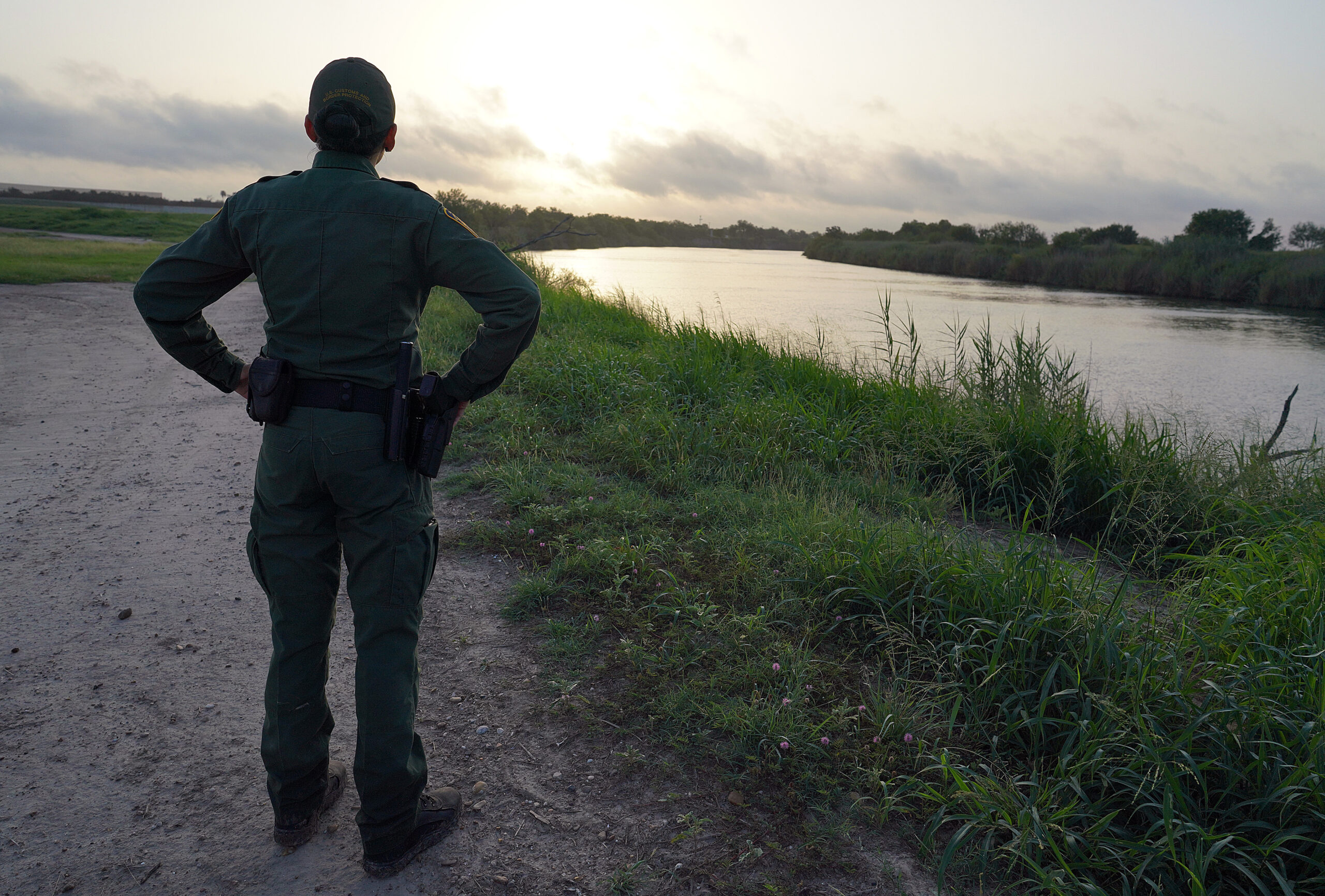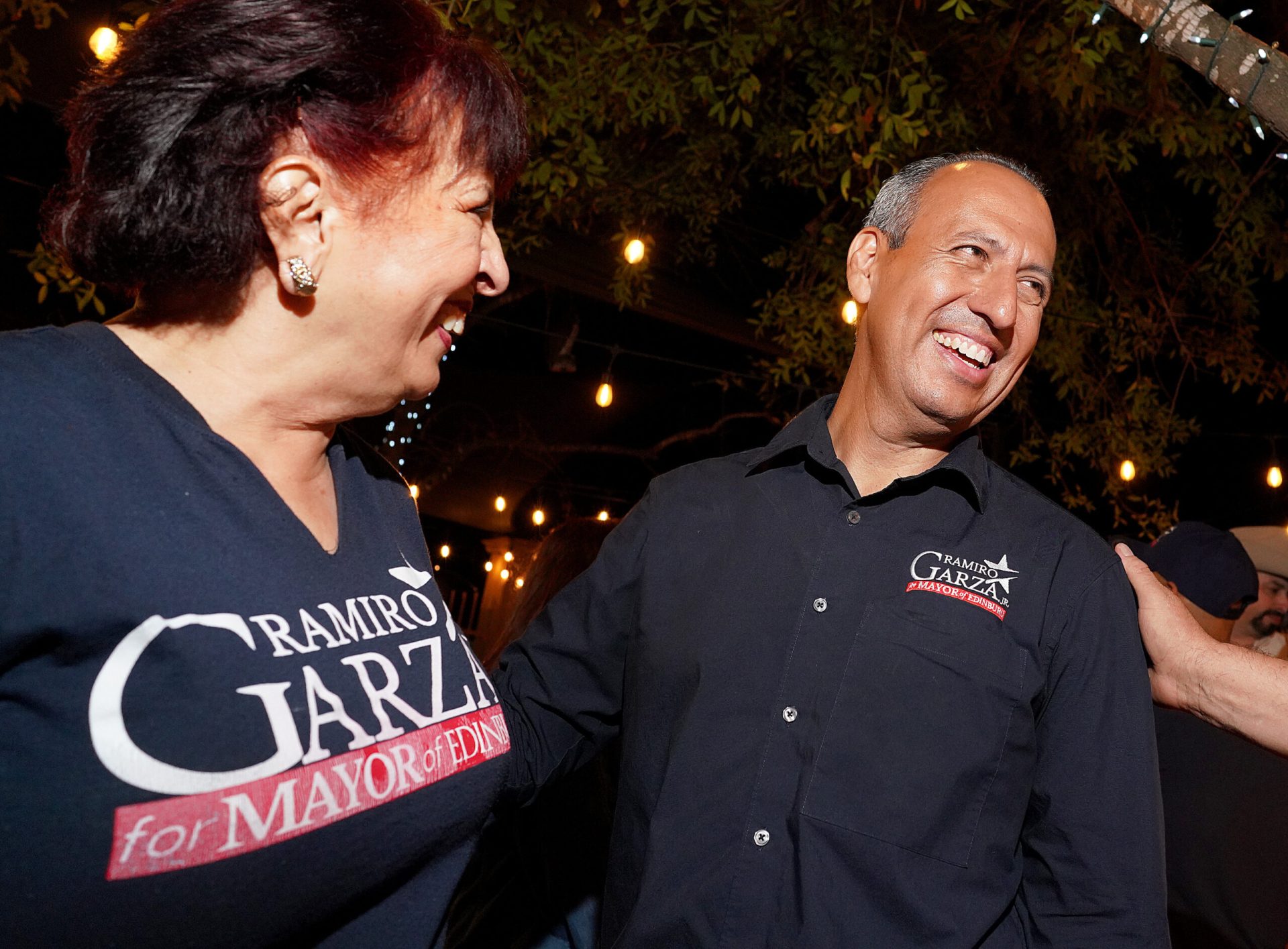BY BERENICE GARCIA, DINA ARÉVALO, VALERIE GONZALEZ AND MARK REAGAN | STAFF WRITERS
As the world transitioned into year two of the COVID-19 pandemic, residents of the Rio Grande Valley clearly wanted a return to normal as evidenced by the region’s vaccination rates, which were some of the highest in the state throughout the entire year.
But in February, the region — and all of Texas — received a big blow as Winter Storm Uri swept across the state.
Hundreds of people died and millions more spent days without electricity as the power grid failed.
The historic ice storm, which first began to sweep across the state one day before Valentine’s Day, caused the Texas power grid to become “seconds and minutes” away from a system-wide collapse that would have plunged the state into darkness for months, according to state officials.
The year was also marked by a record-breaking number of encounters with migrants along the border and a resurgence of Trumpesque policies and strategies to curb them on a statewide level.
As people shut in their homes to stay safe from the coronavirus, thousands fled theirs in an attempt to leave behind violence and poverty prompted by turbulent weather and the pandemic. The effects were strongly felt in the Valley, the southernmost part of the US-Mexico border.
From top to bottom, 2021 ushered in significant changes to the Rio Grande Valley, including its political landscape, which was dotted with retirements, runoffs and the once-in-a-decade state redistricting, a process led by Texas Republicans that’s mired in controversy.
COVID-19 VACCINES
When the COVID-19 vaccine first became available in December 2020, only front-line medical personnel, EMTs, home health workers and healthcare providers were eligible to receive it.
It wasn’t until late March 2021 when eligibility opened to all adults and, over time, expanded to the current eligibility pool that now includes children five years and older.
When the vaccine became available for all adults on March 29, about 15% of the population had already been fully vaccinated, while more than 25% had received at least one dose.
By mid-May, 38% of the RGV population was fully vaccinated and about 49% had received at least one dose.
But by this time, the number of vaccine doses being administered on a weekly basis was in decline, having peaked the week of April 5 through April 11 with a high of 115,914 doses.
Still, the Valley continued to outpace the national rate of vaccinations.
President Joe Biden had set a goal of having 70% of the adult population vaccinated with at least one dose by July 4. The country fell short of that goal but the Valley had exceeded it with 78% of adults — those 16 years or older — having received at least one dose. Among those adults, 67% had been fully vaccinated.
At this point statewide, only 48% of the entire Texas population had received at least one dose and just over 41% had been fully vaccinated.
It was also around July 4 that the number of vaccinations being administered statewide hit a low of about 44,000 daily doses. As the Delta variant of the coronavirus spread, though, more people flocked to get immunized and by Aug. 4, the state was reporting more than 75,000 daily doses being administered.
That same trend was seen locally.
As vaccinations waned again after that, local officials began offering incentives for residents to get vaccinated beginning with the city of Edinburg in September.
The city partnered with DHR Health to offer $100 gift cards redeemable at local businesses to Edinburg residents who were vaccinated on certain days at the hospital’s vaccine clinic.
Then in November, the city of Mission launched its own vaccine incentive program, giving out a $50 or a $100 gift card to spend at small businesses.
Around the holidays, the Valley again saw bumps in the number of doses being administered, which included booster doses of the vaccine. Those became available to adults 18 years and older in November.
As of Dec. 23, about 86% of the Valley’s population had received at least one dose, while 69% had been fully vaccinated. Approximately 16% of the entire population had received a booster shot.
WINTER STORM
On the night of Feb. 13, the Electric Reliability Council of Texas (ERCOT) began cutting power to customers across the state in a process known as “load shedding.”

As temperatures that night plummeted into the 20s from the Panhandle to the Rio Grande Valley, two things began to happen to the power grid simultaneously — residents began producing record demand for electricity to keep warm and the storm began to cause icing along power lines and at power generation stations, including those fueled by coal and natural gas.
The demand for electricity began to skyrocket just as the state’s power grid — which is independent of the rest of the nation — began to lose its capacity to generate power with vanishingly quick speed.
ERCOT ordered power distributors across Texas to begin immediately shutting off electricity in order to prevent a system-wide collapse that officials said would have taken months to repair.
The blackouts were meant to be temporary and intermittent. The plan had been to roll the power outages to different customers across the state so that residents would be without power only temporarily, while the state’s power grid remained safe from collapse.
But that didn’t happen. Instead, those whose power was knocked out Monday night remained without power for the remainder of the week. Worse yet, the blackouts only expanded as the days went on.
More than 10 million people were left without power that week. The storm is also estimated to have caused more than $130 billion in economic damages.
But the gravest consequence of the storm was the number of lives it took. In the months after Uri, officials confirmed that 237 people had died as a result, though some estimate that number could actually be as high as nearly 1,000.
IMMIGRATION
Migrant families began to get released in greater numbers at the Brownsville bus station in February. Shortly after, the number of migrants arriving at the border increased rapidly.

U.S. Customs and Border Protection officials struggled to keep up. The agency created additional space in Donna and a temporary site under the Anzalduas bridge to process migrants, but they were outpaced, particularly by children traveling into the country without their parents.
Leaked photographs of children crowded into the Donna facility proved the situation became dire by March. Reports of the effects of overcrowded conditions surfaced from Donna a month later and included an account of a child kept there for up to fifteen days, twelve days past the three-day processing deadline.
While the federal government called on volunteers to assist on the border and created intake sites to expedite processing of migrant children, restlessness grew in the state, and in local and Mexican border communities.
Texas Gov. Greg Abbott, on campaign mode, sent mixed messages as he sought action from the Biden administration but also stalled efforts to help cover financial costs for local organizations helping migrants.
Instead, the governor spurred the creation of the Texas Department of Public Safety’s Operation Lone Star which started in Starr County in early March. Months later, he unveiled a statewide plan involving the arrest of migrants trespassing on private property, the creation of fencing and a wall during a news conference at Del Rio in June.
By then, agents working for Border Patrol were overwhelmed in the Rio Grande Valley. They had begun releasing hundreds of migrants without a date to report to immigration court, an unprecedented move.
Doors to relieve pressure on the number of migrants held in custody were closed to CBP.
Tamaulipas imposed rules to keep families with children of a certain age from being returned to Mexico, while Laredo’s city government sued DHS to keep migrants from getting bussed to their municipality. Top Valley officials even considered leaving the busiest checkpoint unmanned to reassign border patrol agents to help process migrants, though headquarters ultimately blocked that option.
The greatest challenge for local communities and federal agencies came at the start of August.
CBP’s processing capabilities were tested when they held 446% of people over their limit. That same day, the largest migrant shelter operated by Catholic Charities of the Rio Grande Valley in McAllen, shut down after it reached its capacity.
On a local level, the county was facing growing public concerns following an incident in La Joya in which a group of quarantined migrants left their hotel and went into a restaurant without face masks. Abbott stepped in after that situation and signed an executive order to prevent the transportation of migrants by anyone other than federal agents. It was blocked by the courts and called “catastrophic” by critics, including the chief of Border Patrol in the Valley sector.
Hidalgo County and the city of McAllen issued emergency declarations, erected an emergency processing shelter and then moved it from city limits to the Anzalduas park.
Over in Reynosa, an encampment began forming in April, similar to the one in Matamoros, after the U.S. returned thousands of people back to Mexico under a pandemic-induced border policy. Thousands remain there, suffering through squalid and dangerous conditions, waiting for the policy to be rescinded to have a chance to ask for asylum in the U.S.
POLITICAL LANDSCAPE
Locally, a new era arrived in McAllen with longtime Mayor Jim Darling deciding not to run for reelection. The voters selected McAllen attorney Javier Villalobos to replace Darling, known for colorful press conferences and a dance here and there.

However, perhaps the most-watched mayoral race was in Edinburg, where former city manager Ramiro Garza prevailed over now former mayor Richard Molina, whose reelection bid was in the shadow of allegations of voter fraud, to which he has pleaded not guilty and maintained his innocence since his arrest.

Then there were retirements. Eddie Lucio Jr., one of the most senior members of the Texas Senate, announced this year that he would not seek reelection for Senate District 27, ushering in a must-watch primary in Cameron County.
District 34 U.S. Representative Filemon Vela, D-Brownsville, also announced he would not seek reelection earlier this year.
And then redistricting happened.
District 15 U.S. Representative incumbent Vicente Gonzalez was redrawn into District 34 and is now running for Vela’s seat.
Gonzalez had narrowly won election in 2020 against Republican Monica De La Cruz in the district, which Republicans redrew to become more red.
There’s a heated battle on the horizon now in perhaps the most important race for the Rio Grande Valley contingent to Congress.
The Democratic primary is crowded as is the Republican primary, and with more Republican-leaning counties to the north, a non-blue district in the Valley could be a possibility.
Redistricting in Texas has — per the norm — been controversial.
There are multiple lawsuits that have been filed alleging Republicans redrew the maps, including District 15, to favor white voters, who more often lean to the right.
Despite those allegations, there is evidence that more of the Valley’s Hispanic voters are turning to the Republican party over issues about law enforcement and abortion.
The primary is in March and at the end of the day, Valley voters will likely decide who is sent to Congress because the border remains the most populous region in District 15.
Also of note is the party switch of Texas House District 31 Rep. Ryan Guillen.
Guillen offered the amendment to move Gonzalez into U.S. Representative District 34 from District 15.
He did so as a Democrat.
Shortly after that amendment passed, Guillen announced in Floresville, which was newly redrawn into his district, that he will run for reelection as a Republican.
To see the year in photos, check out Monitor photojournalists Joel Martinez and Delcia Lopez’s full photo galleries:




